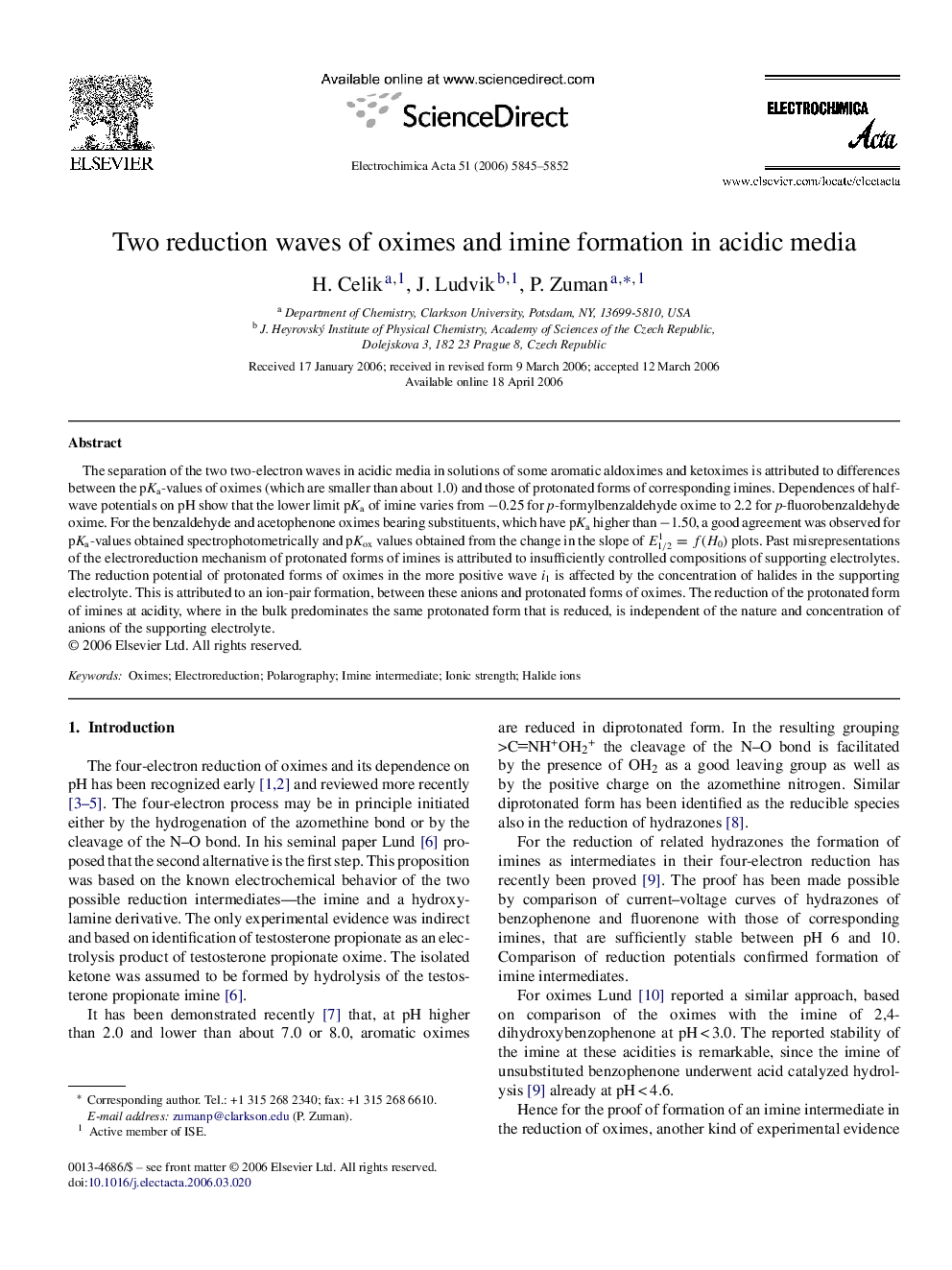| Article ID | Journal | Published Year | Pages | File Type |
|---|---|---|---|---|
| 194672 | Electrochimica Acta | 2006 | 8 Pages |
The separation of the two two-electron waves in acidic media in solutions of some aromatic aldoximes and ketoximes is attributed to differences between the pKa-values of oximes (which are smaller than about 1.0) and those of protonated forms of corresponding imines. Dependences of half-wave potentials on pH show that the lower limit pKa of imine varies from −0.25 for p-formylbenzaldehyde oxime to 2.2 for p-fluorobenzaldehyde oxime. For the benzaldehyde and acetophenone oximes bearing substituents, which have pKa higher than −1.50, a good agreement was observed for pKa-values obtained spectrophotometrically and pKox values obtained from the change in the slope of E1/21=f(H0) plots. Past misrepresentations of the electroreduction mechanism of protonated forms of imines is attributed to insufficiently controlled compositions of supporting electrolytes. The reduction potential of protonated forms of oximes in the more positive wave i1 is affected by the concentration of halides in the supporting electrolyte. This is attributed to an ion-pair formation, between these anions and protonated forms of oximes. The reduction of the protonated form of imines at acidity, where in the bulk predominates the same protonated form that is reduced, is independent of the nature and concentration of anions of the supporting electrolyte.
